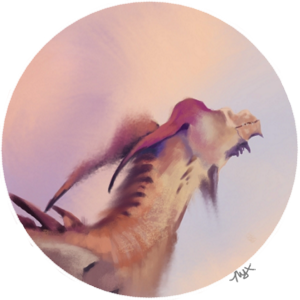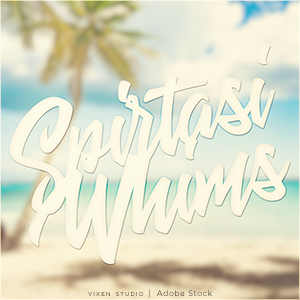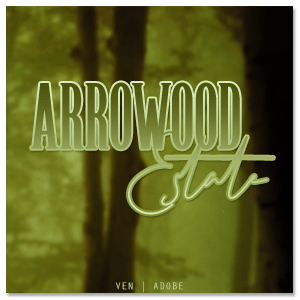| |

|
EDIT: Photos and updates are on the second page! ----------------------------------------------------------------------------- Hi folks! I am currently a biology major attending college and about to finish up my degree. I will be continuing after this and specializing on down the road but for now, I have one and a half quarters left before I graduate and transfer. (WHOOO) Anyways, I am a part of a small, undergrad rearch group at my campus lab and we are working on genetics, isolating genes, and working on a completely original study on a particular type of sea grass common around where I live. We want to see the genetic effects climate change has over this sea grass and we are also wanting to clone and replicate the sea grass specimines to attempt to alter its genes over time. Since the lab we are in is a genetics and anatomy lab, it is only natural for us to have some incredibly unique (and honestly, really cool) things and beings in this lab. One of these things being a 4 year old wild type GFP male axolotl. For those of you who are not familiar with what this means, I will explain it for you :) Green Fluorescent Protein (or GFP) is a protein originally found in jellyfish that allowed them to glow in the dark. GFP was then isolated from a species of jellyfish called the Aequorea victoria, commonly known as the Crystal Jellyfish, which causes its bioluminescence (or its ability to glow by producing light). GFP has been used by many fish breeders to create those glow fish you often see in pet stores. This same gene has also been used in dogs, cats, and axolotls. "Wild type" simply refers to the coloration and pattern on an axolotl's body. Wild types are typically mottled (or speckled) with green, brown, and even black markings or speckles and a lighter colored belly. If you have any questions about what this is or want any additional information on the two topics above, feel free to ask below! Going back to this axolotl, I noticed his tank water was running clear but the actual glass itself had some nasty alge growing on it (not bad but i know i would like to see into the tank and axolotls are both social and intelligent so im sure they would like to see out and the alge blocks some parts of their view). Axolotls naturally inhabit two still-water lakes in Mexico but are now critically endangered because of human pollution, population growth, and the movement or diversion of this water to suit human needs. Because of this, the last axolotl seen in the wild was in 2012 (if I recall correctly). Axolotls have a lifespan of only 10 years so it is safe to say that if this was the last wild axolotl, it is very possible he/she is no longer alive making domesticated axolotl's the remaining population. They do not have problems living in muddy or alge water but, I asked the lab tech after my undergrad research session if she ever needed help with them that I would be happy to. She is currently the only lab tech on this particular campus due to covid and admitted that she would love to have some help. We got to talking and she ended up showing me that we have a 6 year old, Gold Albino female who has actually been bred to the male twice in the past for embryo studies and research. The lab tech and my professor have been wanting to breed them again because you can see the axolotls develop due to their eggs being completely clear. After discussing it, we both agree that we should breed the axolotls again and plan on doing so at the beginning of March. We will begin preparing next week once the alge snails and alge treatment comes in. I will be documenting everything here so you all can see the process too! Photos will be coming (hopefully) sometime next week if I can get them. --- To be very clear, I do not support the breeding of any animals without the proper research, facilities, materials, space, and genetic tests for any animals being bred. You can not go off of guesses and physical appearance alone to know if an animal is sound and suitable for breeding. If you are not a professional or have not consulted a professional, please do not try this at home or with pet store bought animals. I am also against the breeding and selling animals purely for profit rather than the betterment and understanding of the species or breed. At my lab, we have all of the genetic tests, information, and tools needed to maintain these animals. All axolotls hatched and raised are given to biology students who are prepared and knowledgeable on the upkeep of axolotls. Rest assured that they are in good homes and that our axolotls are well taken care of. Both the male and female are active, social, and very healthy. |
|  |
|
| |

Moderator |
That's honestly so cool! I remember learning about them on my own when I was really little and the seemingly sudden interest in them has allowed me to expell all the information about them that I've kept hidden for so many years |
|  |
|
| |

|
They are such wonderful beings and I am so excited to be a part of an such an awesome project. I am happy you learned about them at such a young age! To be honest, I really didn't know about them until I was 11 or 12, whenever a friend of mine said he wanted one as a pet and I had no clue what he was talking about lol. But they are fantastic and I am glad you seem to be well educated on them, Tasi! |
|  |
|
| |

|
I did not get photos this week, the stuff for the tank cleaning that we are doing has not come in yet. With the snail mail here (I live on an island and nothing gets here on time except for amazon prime), it is expected that we will see it next week. There are also packaging shortages because of factory shut downs, and because of the truck driver protests things are not really moving around as they normally would. So the axolotls are going to have to wait another week before I can do their tanks and then about a week or two after that they will be bred! |
|  |
|
| |

|
That is the coolest. I just got an axolotl about three weeks ago. He (not confirmed, just what I call him because that's better than "it") is just the cutest. He's a golden albino as well, he has just an amazing pattern to him, lots of bright flecks of gold. |
|
|
| |

Trivia Team |
You might want to not add snails. The axies will 100% eat them and could choke on them. It's not reccomended to house axies with any other aquatic animals as they will eat anything. Also please make sure the treatment is axie safe! Things like aloe are extremely toxic to them and some fish products contain that. Best way to handle algea is to buy a sponge and clean it off yourself. Or a magnetic aglea cleaner! I can provide links if needed (: * On another note that sounds like a super cool job! I have a gold ablino GFP boy names jareth. I love him to bits |
|  |
|
| |

|
Jeri just got a golden axolotl |
|  |
|
| |

|
Sweetwater Creek said:
You might want to not add snails. The axies will 100% eat them and could choke on them. It's not reccomended to house axies with any other aquatic animals as they will eat anything. Also please make sure the treatment is axie safe! Things like aloe are extremely toxic to them and some fish products contain that. Best way to handle algea is to buy a sponge and clean it off yourself. Or a magnetic aglea cleaner! I can provide links if needed (: * On another note that sounds like a super cool job! I have a gold ablino GFP boy names jareth. I love him to bits
I was doing additional research on them when I saw that! I was going to tell the lab tech but it was too late. They were smaller snails.... and the male ate them. I went into the lab this morning and saw the shell tumbling at the top of the tank. It did however do a pretty decent job of cleaning the alge off the top half of the tank. - - After that, the tech said she did tons of research on all of the cleaners. She did want to make sure everything was useable and that no chemicals going into the tanks would harm our axolotls.
Jericho Stables said:
That is the coolest. I just got an axolotl about three weeks ago. He (not confirmed, just what I call him because that's better than "it") is just the cutest. He's a golden albino as well, he has just an amazing pattern to him, lots of bright flecks of gold.
This is such a pretty axolotl! I love the gold. If i bring one of our offspring home myself, I want either a GFP gened one or a golden albino since they are just magnificent. He looks very similar to our female. I personally think she looks like a banana with bright pink frillies/gills XD |
|  |
|
| |

Trivia Team |
Glad to hear your guys did some research! I can tell the babies are well cared for (: Hope all goes well and you get the algae taken care of! It also might help to shorten the amount of time your tank lights are on. I did that and it really fixed the issue. Plus I spray painted the sides and back of tank black. So less light from the room got in (: My light is set on a timer so about 3-5 hours out of the day is low light. The rest of the day until about 8pm it's blue light. It helped out a lot with my issues plus adding live plants! Like Java fern, Amazon sword and anubias (not sure if that's how you spell it). Those are all very good beginner plants, what they do is soak up nutrients from waste and such. So that the algae doesn't have nearly as much to survive on. You can also place plants in the filter! Like pothos, elephant ear and spider plants. They don't always survive because they need to adapt to a water environment. You just place only the base of the plant into the filter. |
|  |
|
| |

|
Sweetwater Creek said:
Glad to hear your guys did some research! I can tell the babies are well cared for (: Hope all goes well and you get the algae taken care of! It also might help to shorten the amount of time your tank lights are on. I did that and it really fixed the issue. Plus I spray painted the sides and back of tank black. So less light from the room got in (: My light is set on a timer so about 3-5 hours out of the day is low light. The rest of the day until about 8pm it's blue light. It helped out a lot with my issues plus adding live plants! Like Java fern, Amazon sword and anubias (not sure if that's how you spell it). Those are all very good beginner plants, what they do is soak up nutrients from waste and such. So that the algae doesn't have nearly as much to survive on. You can also place plants in the filter! Like pothos, elephant ear and spider plants. They don't always survive because they need to adapt to a water environment. You just place only the base of the plant into the filter.
Thank you for this! We do currently have live plants in their tanks, not sure which ones, but we will be scraping away the alge since despite the plants it is just growing onto the sides. I'll suggest the dimming the lights and/or switching them out and mention painting the back black on the larger tank. The smaller one has a black background and doesn't have as much alge on it. |
|  |
|